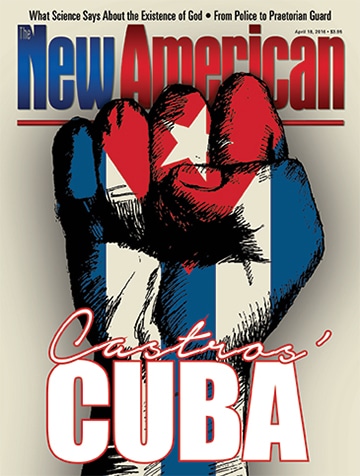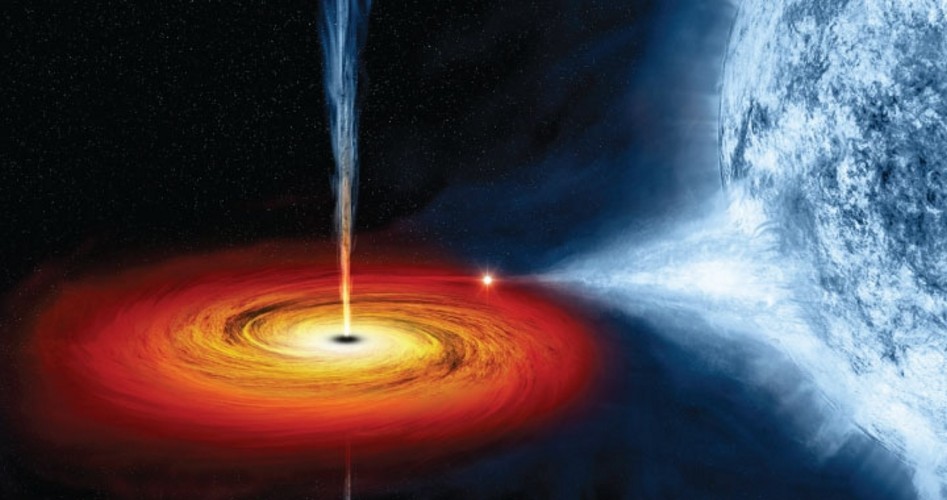Do Multiple Universes Explain Away the Evidence of God?
Cosmologists, on the whole, agree that the universe somehow met seemingly insurmountable conditions in its formation to allow for the development of life — agreeing that it is just right for life to exist. Incredibly, if the universe were very slightly different in its properties at all, life would be essentially impossible. For instance, as cosmologist Luke Barnes has said about the beginning of the universe, if there was a very tiny fluctuation in the amount of matter of the universe, life would have been unattainable: “If you put the wrong amount of matter in by one part in 1055 [a 1 with 55 zeros after it], if you put in too much matter, then gravity has too much of a hold on the universe, and the whole thing will re-collapse, within seconds basically. If you don’t put in enough matter, then the whole thing expands too fast, and in particular, too fast for galaxies to form and stars to form and planets to form.”1
To try to explain away this and many other astounding cosmic “coincidences” that allow life to exist in our universe, some cosmologists have tried to find naturalistic alternatives to the beginning of the universe, other than it was designed by an intelligent being — a being that atheist scientists are trying to disavow. Effort is put into naturalistic explanations because the incredible odds of these coincidences happening by pure chance are so long that they verge on being impossible, rather than being relatively likely, making atheistic cosmology virtually untenable and intelligent design very likely (see article "What Science Says About the Existence of God"). There are four main naturalistic theories in this category, which are explained in Carlos Calle’s book The Universe: Order Without Design.2
How Can That Be?
The first naturalistic theory, the self-organizing model, can be dismissed out of hand. It claims that — similar in manner to microstructures such as in mineral crystal formations that make up rocks — nature self-organizes starting at subatomic scales and that organization at small scales lends itself to self-organization at macro- or universe-size scales. But it is fatally flawed as an explanation of the universe without a designer because it requires that the universe had a “start point” (the others go back into infinity), as well as physical matter that was already created and rules of the universe being in place before that — rules that lead to order, rather than disorder — hence relying on design and fine-tuning of the universe, rather than explaining away the fine-tuning.
The other three naturalistic explanations that attempt to make sense of the sheer unlikelihood that a life-permitting universe would come about spontaneously (without being designed by an intelligent being) postulate that countless universes — a multiverse — exist and that the extremely large number of universes makes it likely that a life-friendly universe would come about. (Essentially a vast number of universes decreases the odds against a universe such as ours forming.)
The first multiverse candidate, according to Calle, is the “eternal inflation scenario [which] tells us that an infinite number of universes will randomly spring out” (more plainly, vast numbers of universes simply pop into being, expanding as if they were bubbles next to already existing universes) — meaning that a life-permitting universe will eventually inevitably appear. In this case the universes appear as part and parcel of a cosmologic thing called “inflation.” Most cosmologists believe that at the beginning of our universe, in a timespan of a minuscule fraction of one second, the universe inflated in size from something infinitesimal to something on the order of a quarter of a billion light years across, and they dub this “inflation.”3, 4 The article “5 Reasons We May Live in a Multiverse” explains the “eternal inflation” hypothesis:
Eternal inflation … suggests that some pockets of space stop inflating, while other regions continue to inflate, thus giving rise to many isolated “bubble universes.”
Thus, our own universe, where inflation has ended, allowing stars and galaxies to form, is but a small bubble in a vast sea of space, some of which is still inflating, that contains many other bubbles like ours. And in some of these bubble universes, the laws of physics and fundamental constants might be different than in ours.5
The second multiverse explanation is the cosmological natural selection model, which posits that each universe creates more universes through its black holes, and that the universes with superior black hole-making abilities will spawn new universes, while the other universes die off, eventually bringing about a universe that is amenable to life (the result is universes that fine-tune themselves).
Third is the cyclic model, which hypothesizes that a cycle of “big bangs” happens — there are several cyclic models, each with a unique speculation about how and why the cycles happen. An early cyclic model, briefly contemplated by Albert Einstein, assumed that a universe would expand for part of its life, then it would contract until it “crunched” and another big bang happened. Other cyclic models presume, based on string theory, that there are branes (short for “membranes”) that both contain and form universes. One of these models conjectures that another universe resides within millimeters of our own (which we can’t see because it is in a fifth dimension) that has for an infinite time caused a series of “big bangs” when the universes collided. Another presumes that the branes function much like a sheet when the sheet is vigorously shaken. The article entitled “The Theory of Parallel Universes” explains:
Consider flapping a sheet up and down rapidly onto the surface of a bed. The sheet doesn’t touch the bed only in one location, but rather touches it in multiple locations. If a sheet were a brane, then each point of collision would create its own universe with its own initial conditions.6
Theoretical Constructs
However, though the multiverse theories may be mathematically possible, unfortunately for those trying to disprove “design” in the universe, they are logically improbable, as well as impossible to prove. Let’s examine some of the problems.
Both the eternal inflation model and the cosmological natural selection model envision what are vast numbers of outgrowths of new universes from already-existing universes (imagine your own body covered with little growths that eventually turn into new, slightly different versions of you). To realize a problem with the theories that postulate an infinite number of universes, again imagine those little growths on your body, only this time picture them growing to full size, and as they grow, each of them has a multitude of little growths growing on it as well. How long would it be before the new versions of you ran out of room to grow because they were bashing into another new version of you?7
Under such theoretical constructs, if the void of space could be viewed in its entirety from a distance, cosmologists imagine that the new universes — which, again, are supposedly never-endingly forming — would look like a series of ever-growing, ever-multiplying soap bubbles in a giant mass. And the contents of each of the seemingly infinite number of universes (the multiverse) — consisting of the stars, moons, planets, etc. — don’t slam into each other because the empty space around each universe is large enough so that the universes merely grow next to each other, filling up more of the infinite sky.
Considering that the formation of the only universe we know of came about — most cosmologists would agree — through an unimaginably violent explosion during which the universe super-expanded in less than a second, if a universe formed alongside ours by this method (presumably in the midst of a mass of other universes), the two universes should logically collide with such astronomic power and dazzling releases of light and energy that they should, at the very least, be noticeable by those living in a universe. It should logically be akin to a stick of dynamite exploding amidst soap bubbles. But cosmologists can’t find evidence of universes ramming each other, though they have tried, so they are left postulating that not only must the expansion of a universe literally create more space (this hypothesis is accepted and well-tested, though scientists don’t know how it happens), but that the regions between the universes must also expand exponentially (as is what would happen during inflation in a universe) and seamlessly so that the universes don’t touch one another.
Also, the model suggesting that black holes spawn new universes assumes that a sort of “selective breeding” happens with the universes, as with plants and animals, resulting in the production of long-lived universes, containing matter such as planets and stars, that are amenable to life. One problem with such a suggestion is akin to animal breeding: Since the offspring resemble their parents, you first need suitable parents. In other words, universes that are likely to give off life-allowing universes are universes that themselves were likely to allow life — and where did these universes come from?3
The various cyclic models have additional problems. For instance, our universe is unlikely to expand then contract until a new big bang happens: It has been determined that the universe’s expansion rate is speeding up, not slowing down toward stopping and contraction. As for the cyclic model wherein another universe resides next to ours in another spatial dimension, it relies on two universes being so perfectly aligned and calibrated with each other that they always bounce straight out and straight back, which would seem to be miraculous unto itself and logically require the fine-tuning of a creator being.2 There are problems with the other cyclic models as well, not the least of which is that there is no evidence that they explain anything real.
Physicist Victor Stenger argues in the book Scientists Confront Intelligent Design and Creationism that we can rule out an intelligent being because nothing about known physics would rule out a never-ending multiverse.8 However, nothing supports such a theory either. And it is almost a certainty that no solid evidence is ever going to support it.
In fact, the only methods that scientists can conceive to test for evidence of other universes would not qualify as proof even if they found exactly what they were looking for.
The test around which the most excitement seems to spring is one that is trying to find evidence of another universe bumping into our own by examining what’s called the Cosmic Microwave Background (essentially microwave radiation that is still hitting Earth as a result of the big bang). If another universe bumped ours as our universe was beginning to form, it is thought that it would have impacted the background radiation and caused a section of it to have a different temperature than the radiation around it, and it is thought that the area where there is a temperature change should look like a disk. Such a sign has not been found, and even if a circular pattern is found, we could not reliably attribute it to another universe because other theories, ones that don’t imply a multiverse, could just as plausibly explain the same data, and our understanding of the universe is woefully incomplete. For instance, cosmologists are able to determine that approximately 80 percent of matter in the universe is “dark matter” — matter that is non-luminous and that we can’t see — but they have not discovered what this dark matter consists of. A “dent” on the background radiation would be, at best, merely consistent with some multiverse models, but it wouldn’t be particularly convincing evidence that a multiverse exists.
The other methods whereby cosmologists hope to find evidence of other universes suffer from similar flaws.
Cosmologist Luke Barnes even questions in his article “The Fine-tuning of the Universe for Intelligent Life” whether multiverses can even be deemed “science”:
Could a multiverse proposal ever be regarded as scientific?
... We cannot observe any of the properties of a multiverse {M, f(m),π} as they have no causal effect on our universe. We could be completely wrong about everything we believe about these other universes and no observation could correct us. The information is not here. The history of science has repeatedly taught us that experimental testing is not an optional extra. The hypothesis that a multiverse actually exists will always be untestable.
The most optimistic scenario is where a physical theory, which has been well-tested in our universe, predicts a universe-generating mechanism. Even then, there would still be questions beyond the reach of observation, such as whether the necessary initial conditions for the generator hold in the metaspace, and whether there are modifications to the physical theory that arise at energy scales or on length scales relevant to the multiverse but beyond testing in our universe. Moreover, the process by which a new universe is spawned almost certainly cannot be observed.9
One commenter on the article “5 Reasons We May Live in a Multiverse” by the name of Ke Fin was less kind than Barnes, but perhaps just as accurate, stating, “Fundamentally there is not much difference in these arguments and Greek Mythology. Clear evidence that genius, insanity, and delusional thinking can happily co-exist in the highly intelligent groups.”5
Not only do the above theories argue against their own likelihood, naturalists can hardly claim to be sticking with the empirical data if they rely on a multiverse to explain the fine-tuning of the universe.



